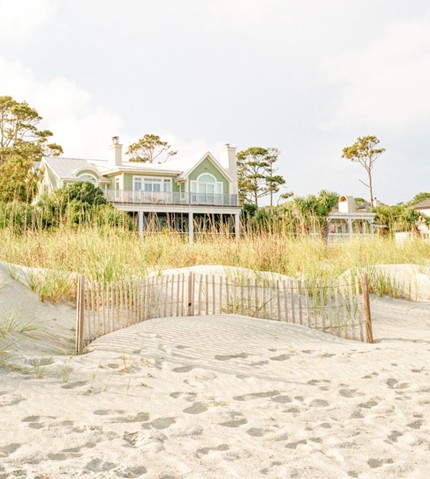
The allure of the ocean is timeless. The smell of the salt air draws countless people with a dream of owning a slice of coastal paradise to the Jersey Shore. If you’re looking for a permanent residence, vacation escape, or investment opportunity, waterfront homes continue to hold enduring appeal. For those exploring homes for sale in Somers Point, the vision of beachside living is often irresistible. Yet, as beautiful and inspiring as these properties can be, buying along the coast comes with unique risks and responsibilities. Without careful consideration, that dream home can quickly turn into an expensive and stressful mistake.
Before signing, it’s crucial to understand what to avoid when buying beachfront property. From hidden costs and environmental risks to insurance challenges and maintenance demands, the seaside lifestyle requires a level of awareness that goes beyond traditional home buying.
A common mistake among first-time coastal buyers is underestimating the total cost of owning a beachfront home. The initial purchase price is often higher due to limited inventory and demand, but it’s the ongoing expenses that can truly catch buyers off guard.
Insurance costs, especially for flood and hurricane coverage can be significantly higher in coastal regions. Many standard homeowners’ policies don’t cover flood damage at all, requiring a separate and often expensive flood policy. The closer the home is to the water, the higher the risk, and therefore, the higher the premium.
Maintenance costs may also be higher near saltwater. The salty air corrodes metal fixtures, damages paint, wears down roofing materials, and can even affect electrical systems over time. Homeowners often find themselves repainting, replacing, and repairing at a far greater frequency than residents inland.
When budgeting, make sure to consider all these costs, not just the mortgage payment. The beauty of beachfront living comes at a premium and understanding that upfront can prevent financial strain later.
Perhaps the most significant risk of buying a beachfront property is nature itself. Coastal erosion, storm surges, and flooding can severely damage homes or, in extreme cases, lead to property loss altogether.
Before buying, review FEMA flood maps to determine the property’s flood zone classification. These maps indicate how vulnerable the area is and can impact your insurance costs and building restrictions. Properties in high-risk zones often have strict elevation and construction requirements.
It’s also important to research local erosion rates. Shorelines naturally shift over time, but in some regions, erosion occurs at alarming rates, sometimes several feet per year. This can reduce property boundaries and even make structures unstable.
Ask about long-term erosion control efforts, such as seawalls, dunes, or beach replenishment programs. While these measures can help, they’re not foolproof. Understanding the environmental reality of your property will help you make a smart and sustainable purchase.
A general home inspection isn’t enough when buying along the coast. Beachfront properties endure unique environmental stresses that require a more specialized approach. Choose someone with experience in coastal homes, preferably a certified professional familiar with saltwater exposure, humidity control, and flood resistance.
Skipping or rushing through this process can lead to costly surprises down the road. The sea is beautiful, but it’s also relentless - make sure your home can withstand its elements.
Every coastal town has its own set of building and environmental regulations, often designed to protect both homeowners and the shoreline ecosystem. Unfortunately, many buyers overlook these rules until after they’ve purchased only to discover limitations that affect renovations or expansion plans.
Zoning restrictions might dictate how close to the water you can build, what materials are permitted, and even what types of landscaping is allowed. In some areas, strict environmental protections govern dune preservation or limit certain exterior lighting to protect sea turtle nesting sites. Even if you’re not planning major changes immediately, it’s wise to know what your options are for future improvements.
Be sure you understand how the property connects to essential utilities such as water, sewage, electricity, and internet.
For example, some properties rely on private wells or septic systems, both of which require regular maintenance and can be affected by flooding or saltwater intrusion. Others might have shared access roads or easements that require legal agreements with neighboring property owners.
Accessibility is another concern. A beautiful oceanfront view means little if the only road floods during high tides or storms. Investigate how emergency services, delivery vehicles, or maintenance crews can reach the property year-round.
Many buyers justify the expense of a beachfront property by planning to rent it out when not in use. While this can be a profitable strategy, it’s not without challenges.
First, not all communities allow short-term rentals. Some homeowner associations (HOAs) or municipalities have restrictions or require permits. Violating these rules can result in fines or loss of rental privileges.
Second, managing a vacation rental requires time, effort, and often a local property manager. Guest turnovers, cleaning, maintenance, and marketing all add costs that cut into profits.
And finally, seasonality matters. Rental demand peaks during warmer months, leaving some properties empty in the off-season. Conduct market research or consult a local property manager before assuming steady income throughout the year.
Insurance coverage is one of the most critical and complicated aspects of owning beachfront real estate. Don’t assume you’re fully protected just because you have homeowners’ insurance.
You’ll likely need separate flood insurance, which can be obtained through the National Flood Insurance Program (NFIP) or private insurers. Additionally, if the area is prone to hurricanes or tropical storms, windstorm insurance may be required.
Request a Comprehensive Loss Underwriting Exchange (CLUE) report. This document shows any past insurance claims on the property and can reveal recurring issues like water damage or foundation settling. A history of repeated claims may indicate deeper problems.

It’s easy to get swept away by the breathtaking ocean view. But beauty alone shouldn’t dictate your purchase. A smart buyer considers not only what’s visible but what’s practical.
Pay attention to privacy, noise levels, and the direction of the sun. Homes facing east may enjoy spectacular sunrises but endure strong morning glare. Those facing west might experience hot afternoon sun or stronger prevailing winds.
Evaluate the outdoor space too. Does it offer usable shade, wind protection, and safe access to the beach? Is there adequate parking for guests? These factors will impact your daily comfort and the property’s overall value.
Rising sea levels, increasing storm intensity, and shifting weather patterns are changing the landscape of coastal ownership. While some buyers prefer not to think about long-term climate risks, these realities are beginning to influence property values and insurance policies.
Check local and state projections for sea-level rise and flood resilience initiatives. Some communities are actively investing in infrastructure improvements, while others face growing challenges without sufficient mitigation plans.
Owning a beachfront home can be deeply rewarding, but it’s also a long-term investment. Understanding the environmental outlook will help you make a decision that remains sustainable for decades to come.
A beachfront property represents more than real estate, it’s a lifestyle, a retreat, and often a lifelong dream. Yet achieving that dream requires balancing emotion with careful analysis. By avoiding these common pitfalls, you’ll protect not only your financial investment but also your peace of mind.
Do your homework, work with coastal real estate professionals, and never rush the decision. When chosen wisely, a beachfront home can offer unparalleled beauty and joy for generations, proof that the best investments aren’t just in property, but in the life you build by the sea.